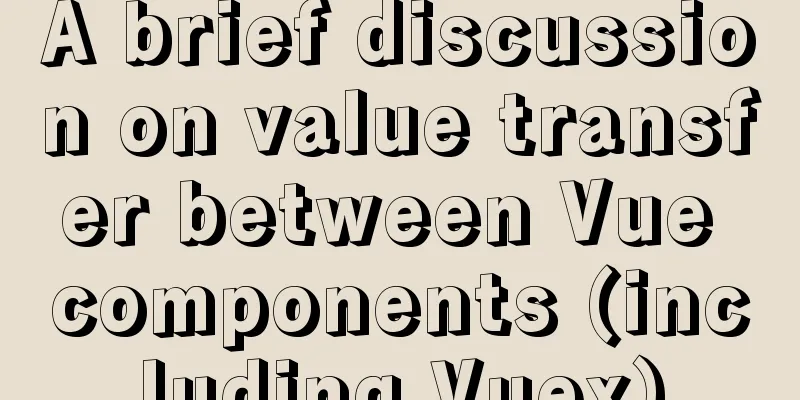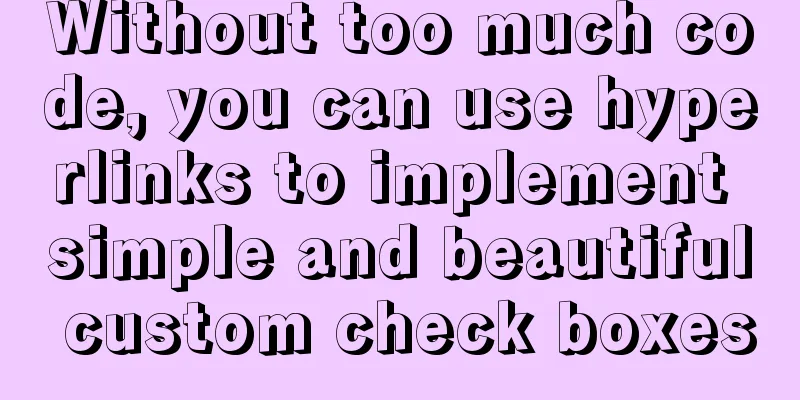A brief discussion on value transfer between Vue components (including Vuex)

|
Without using Vuex, the way to pass values between components is through parent-to-child or sibling components. From father to son:fatherComponent:
<template>
<div>
<HELLOWORLD :needData="content"></HELLOWORLD>
</div>
</template>
<script>
import HELLOWORLD from '../components/HelloWorld.vue'
export default {
components:{
HELLOWORLD
},
data(){
return {
content:"content"
}
}
}
</script>
<style lang="less" scoped>
</style>
SonComponent (the subcomponent name is HELLOWORLD):
<template>
<div>
<h1>HELLOWORLD</h1>
</div>
</template>
<script>
export default {
props:["needData"],
data(){
return {
H:this.needData,
}
},
mounted(){
console.log(this.H);
}
}
</script>
<style lang="less" scoped>
</style>
Son to Father:FatherComponent:
<template>
<div>
<HELLOWORLD @sendData="getData"></HELLOWORLD>
</div>
</template>
<script>
import HELLOWORLD from '../components/HelloWorld.vue'
export default {
components:{
HELLOWORLD
},
data(){
return {
}
},
methods:{
getData(sonData){
console.log("data=>",sonData);
},
}
}
</script>
<style lang="less" scoped>
</style>
SonComponent:
<template>
<div>
<h1>HELLOWORLD</h1>
</div>
</template>
<script>
export default {
data(){
return {
content:"content"
}
},
mounted(){
this.$emit("sendData",this.content);
}
}
</script>
<style lang="less" scoped>
</style>
Effect picture:
In fact, in order to transfer data between parent and child components, data can also be transferred by calling the function of the parent component or the function of the child component. In Vue, the child component calls the parent component's function https://www.jb51.net/article/134732.htm Vue parent component calls the function of the child component https://www.jb51.net/article/219793.htm Vuex is an integral part of the Vue framework;
There are five properties in Vue's store.js: The structure is:
let a={
state: {
name:"moduleA"
},
//mutations are specifically used to change the data in the state attribute mutations: {
setFun(state,item){
state.name=item;
}
}
}
export default new Vuex.Store({
//state is dedicated to storing datastate: {
num:100,
useAcomponent:{
name:"A",
},
useBcomponent:"content",
},
//mutations are specifically used to change the data in the state attribute mutations: {
setStateFun(state,item){
state.useBcomponent="Bcomponent";
}
},
actions: {
httpGetData(store,item){
setTimeout(()=>{
console.log(item);
store.commit("setStateFun",item);
},3000)
}
},
getters:{
//No parameter is passed when calling the function in getters getterFun1(state){
return state.num++
}
//When calling the function in getters, there are input parameters gettterFun2(state){
return function(val){
return state.num+=val;
}
}
},
modules:
ModuleA:a
}
});
}
The data in the state can be accessed in different components. Get state data: Data in this.$store.state.state object; For example, let val = this.$store.state.num; To change the state data, just call the function in the mutations object of Vuex:
this.$store.commit("function name","data");
For example, this.$store.commit("setStateFun","testSetItem");
actions object, used to make requests in Vuex
this.$store.dispatch("function name","data");
For example, this.$store.dispatch("httpGetData","testItem");
Getters object, similar to Vue's calculated properties this.$store.getters.function name; For example // when no parameter is entered this.$store.getters.getterFun1; //When there is an input parameter this.$store.getters.getterFun2(123); The modules object is similar to separating the store modules that need to be used. Each modules object corresponds to a module.
//Get the state data in the modules object this.$store.state.modules object name.state value;
For example this.$store.state.ModuleA.name
//Use the mutations function in the modules object this.$store.commit("function name","input parameter data");
For example, this.$store.commit("setFun","itemabc");
//It should be noted here that if there is a function with the same name in the modules module and in the external (not modules object module) mutations object, both functions with the same name will be executed when calledThis concludes this article on briefly discussing value transfer between Vue components (including Vuex). For more content on value transfer between Vue components, please search previous articles on 123WORDPRESS.COM or continue to browse the following related articles. I hope you will support 123WORDPRESS.COM in the future! You may also be interested in:
|
<<: Tutorial on installing MySQL 8.0.11 using RPM on Linux (CentOS7)
>>: Basic usage of UNION and UNION ALL in MySQL
Recommend
MySQL cross-database transaction XA operation example
This article uses an example to describe the MySQ...
Simple Implementation of HTML to Create Personal Resume
Resume Code: XML/HTML CodeCopy content to clipboa...
MySQL 8.0.13 installation and configuration method graphic tutorial under Windows 64 bit
This article shares the installation and configur...
Detailed tutorial on running selenium+chromedriver on the server
1. Introduction I want to use selenium to scrape ...
Linux file/directory permissions and ownership management
1. Overview of file permissions and ownership 1. ...
Detailed explanation of moment.js time and date processing
Monday to Sunday time format conversion (Y --- ye...
Running PostgreSQL in Docker and recommending several connection tools
1 Introduction PostgreSQL is a free software obje...
Tutorial on installing and configuring MySql5.7 in Alibaba Cloud ECS centos6.8
The default MySQL version under the Alibaba Cloud...
Website Color Schemes Choosing the Right Colors for Your Website
Does color influence website visitors? A few year...
Implementation of positioning CSS child elements relative to parent elements
Solution Add position:relative to the parent elem...
Summary of webpack's mobile adaptation solution
Table of contents rem vw Adapt to third-party UI ...
Detailed explanation of the code for implementing linear gradients with CSS3
Preface The gradient of the old version of the br...
Detailed explanation of character sets and validation rules in MySQL
1Several common character sets In MySQL, the most...
An Incomplete Guide to JavaScript Toolchain
Table of contents Overview Static type checking C...
Detailed explanation of dynamically generated tables using javascript
*Create a page: two input boxes and a button *Cod...











